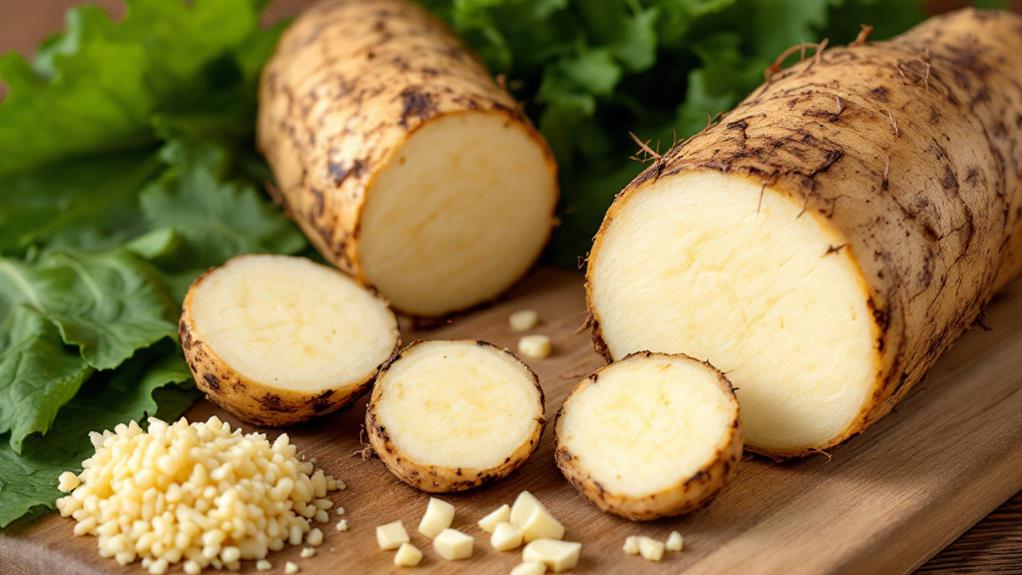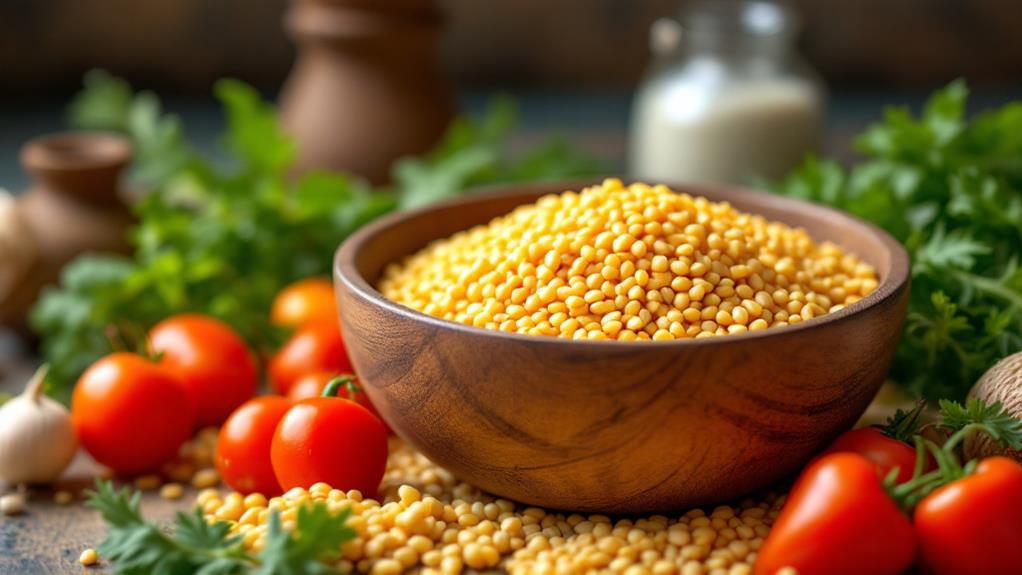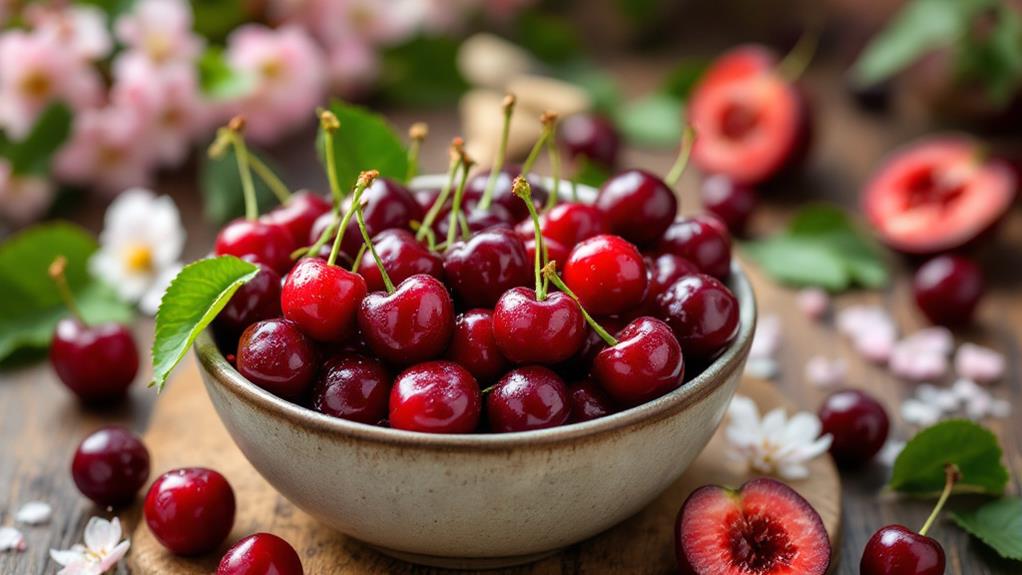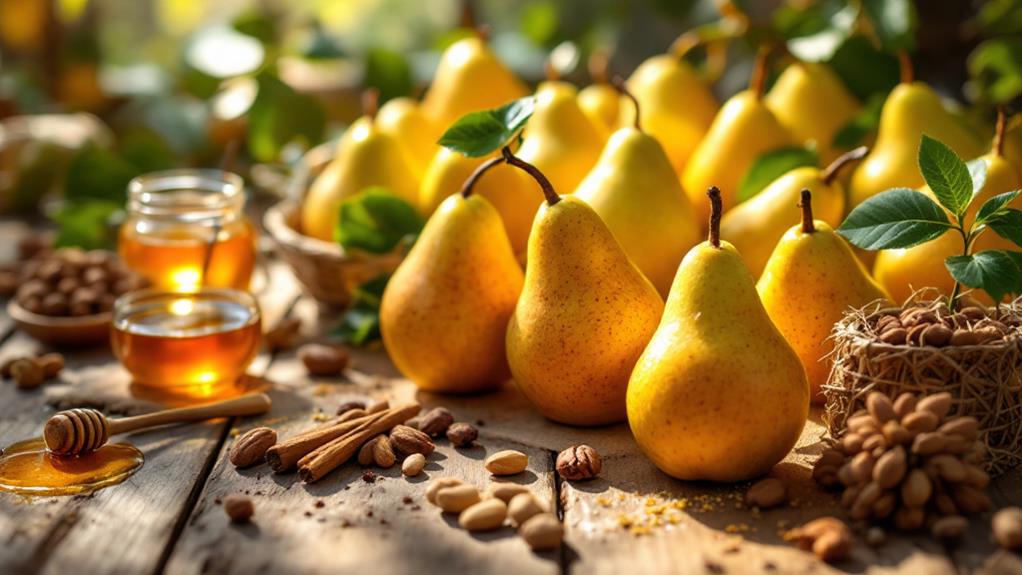All About Kaempferia Galanga (Aromatic Ginger): Benefits and Uses
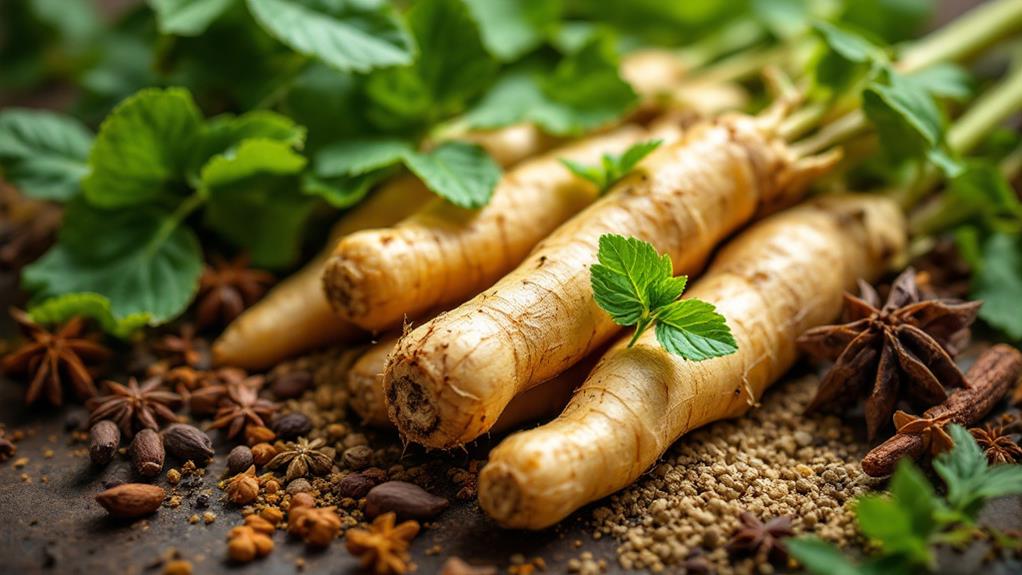
You'll find Kaempferia Galanga, or aromatic ginger, in Southeast Asian kitchens, where its peppery zest transforms dishes like Thai curries. It's not just about taste; this plant is a stalwart of traditional medicine, easing digestive woes and acting as an anti-inflammatory. Its crucial oils work wonders against microbes, bolstering your immune health while its rich blend of minerals provides nutritional benefits. Even for avid gardeners, it grows best with moisture and partial shade in tropical climes. With more details on its uses and potential in health and gourmet applications, there's plenty to unravel about this incredible plant.
Culinary and Traditional Applications
If you've ever savored a Thai curry or an Indonesian stir-fry, you've likely experienced the unique flavor of Kaempferia galanga, commonly known as aromatic ginger. This remarkable rhizome is a staple in Southeast Asian cuisines, celebrated for its distinct peppery flavor. In Thailand and Indonesia, it improves the taste of soups, curries, and stir-fries. Aromatic ginger finds its way into Thai curry pastes, offering a layer of complexity and depth to the dish's complete taste profile.
You can use Kaempferia galanga in different forms—fresh, dried, or powdered. It's often an ingredient in marinades and dressings, adding a revitalizing zest. Beyond its culinary uses, aromatic ginger holds a revered place in traditional medicine. Across regions, it's been used to address cold and cough symptoms and alleviate digestive issues. Practices like Traditional Chinese Medicine and Ayurveda incorporate it for its potential health benefits.
In Java, the rhizome is even brewed into beverages, appreciated for both its flavor and its perceived health benefits. In the domain of folk medicine, Kaempferia galanga continues to be a valued natural remedy, bridging culinary delights with traditional healing practices.
Medicinal Benefits
Frequently revered in traditional medicine, Kaempferia galanga, or aromatic ginger, offers a range of medicinal benefits that you might find intriguing. This potent rhizome is renowned for its ability to soothe digestive issues, acting as a carminative and stomachic to ease indigestion and abdominal discomfort. The presence of bioactive compounds, such as flavonoids and terpenoids, grants it significant anti-inflammatory properties, which can be particularly beneficial if you're dealing with conditions like rheumatism or chronic inflammation.
Moreover, Kaempferia galanga's extracts are known to reduce oxidative stress by modulating reactive oxygen species (ROS). This activity supports its potential chemopreventive properties, offering a promising defense against cancer cell proliferation. If you're worried about infections, you'll be pleased to know that aromatic ginger boasts antimicrobial effects through its crucial oils and extracts, which can improve immune function and help combat microbial threats.
Importantly, studies affirm that Kaempferia galanga is safe for consumption, with no significant adverse effects observed even at high doses. This safety profile, combined with its medicinal benefits, makes aromatic ginger a valuable supplement to both traditional and modern herbal medicine practices.
Agricultural Practices
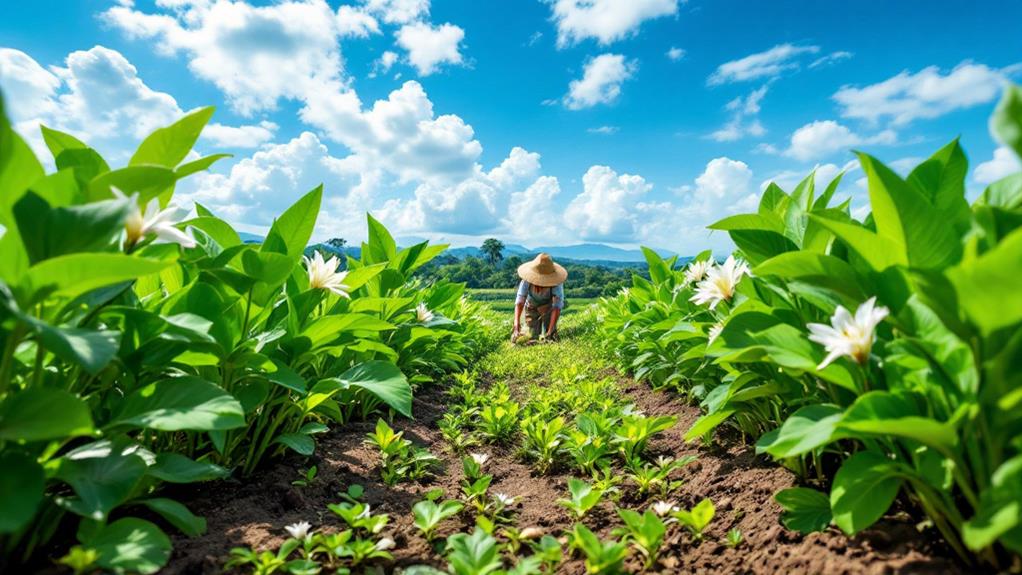
While Kaempferia galanga's medicinal benefits are impressive, cultivating this aromatic ginger requires attention to specific agricultural practices. To guarantee successful growth, focus on providing a tropical climate with well-drained soil, adequate moisture, and partial shade. These conditions are fundamental for thriving plants. The rhizome, however, is prone to bacterial wilt, making it imperative to select healthy planting materials from disease-free sources.
To combat bacterial wilt, you can implement crop rotation with non-host plants and consider preplant treatments like heat treatment and rhizome solarization. These strategies help maintain soil health and minimize disease risks. Furthermore, proper spacing during cultivation is critical. It improves airflow and reduces the spread of diseases among plants.
Regular monitoring of soil for pathogens is another key aspect of sustainable cultivation. By taking these precautions, you can maintain ideal soil health, which is essential for the longevity and productivity of your Kaempferia galanga crop. Adopting these agricultural practices not only guarantees a healthy yield but also supports sustainable farming efforts, allowing you to enjoy the numerous benefits of Kaempferia galanga while preserving the environment.
Phytochemistry Insights
Phytochemistry insights into Kaempferia galanga reveal a wealth of over 97 identified phytochemical compounds, including terpenoids, phenolics, and flavonoids. These compounds contribute considerably to its biological activities and make it a valuable medicinal spice. The major bioactive compound, trans-ethyl-p-methoxycinnamate (EPMC), accounts for a remarkable 52.54% of the extract. This compound is particularly significant for its potential in therapeutic applications, thanks to its anti-inflammatory and anti-oxidant properties.
Kaempferia galanga's phytochemical profile supports a variety of health benefits. Its anti-inflammatory and anti-oxidant effects make it a potent supplement to both traditional and modern medicine. Additionally, the plant exhibits anti-tumorous and anti-bacterial properties, further enhancing its medicinal value. A nutritional analysis of K. galanga reveals the presence of vital minerals like potassium, phosphorus, and magnesium, along with protein and fiber, adding to its health-promoting attributes.
When examining extraction efficiency, acetone proves to be the best solvent for isolating EPMC, yielding 2.24% (w/w), closely followed by methanol at 2.15% (w/w). Choosing the right solvent is fundamental for maximizing the extraction of these therapeutic phytochemical compounds.
Future Research Directions

Exploring Kaempferia galanga's phytochemical richness opens up exciting avenues for future research. You have the opportunity to investigate the specific molecular pathways that underpin its anti-inflammatory activities. Although preclinical studies support these benefits, further investigation is essential to solidify the findings. Imagine unraveling these pathways and how they might improve the understanding of Kaempferia galanga's health benefits, including its chemopreventive properties. This could validate traditional medicinal claims, offering a scientific basis for its continued use.
Genetic analysis plays a significant role in this expedition, especially for improving Kaempferia galanga's cultivation. By studying related species like C. amada, you can identify resistance factors that could lead to bacterial wilt-resistant varieties. This would enhance yields and bolster the resilience of ginger crops. Collaborative efforts among researchers are necessary to uncover Zingiberaceae resistance mechanisms, paving the way for stronger and more robust plants.
Implementing improved quality control measures is also crucial. Techniques like High-Performance Liquid Chromatography guarantee batch consistency and safety in herbal products. This is vital for maintaining the integrity of Kaempferia galanga's health benefits and guaranteeing consumers receive high-quality products.

